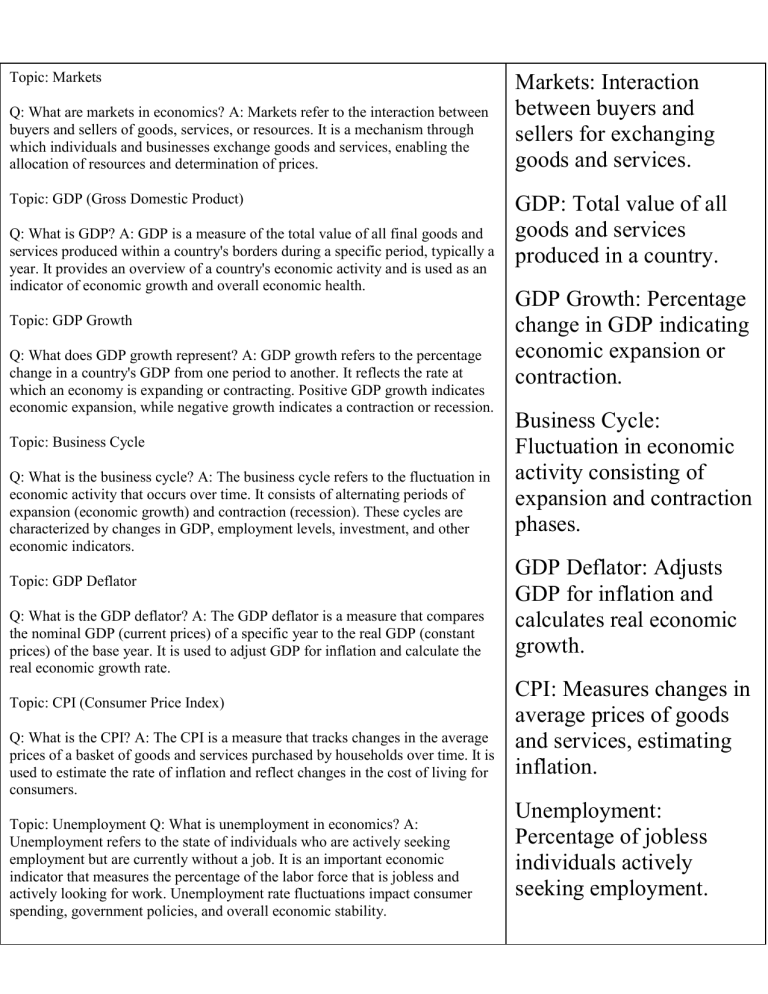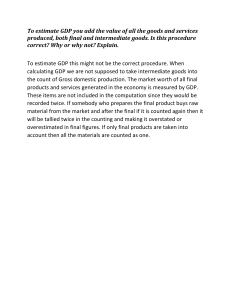
Topic: Markets Q: What are markets in economics? A: Markets refer to the interaction between buyers and sellers of goods, services, or resources. It is a mechanism through which individuals and businesses exchange goods and services, enabling the allocation of resources and determination of prices. Topic: GDP (Gross Domestic Product) Q: What is GDP? A: GDP is a measure of the total value of all final goods and services produced within a country's borders during a specific period, typically a year. It provides an overview of a country's economic activity and is used as an indicator of economic growth and overall economic health. Topic: GDP Growth Q: What does GDP growth represent? A: GDP growth refers to the percentage change in a country's GDP from one period to another. It reflects the rate at which an economy is expanding or contracting. Positive GDP growth indicates economic expansion, while negative growth indicates a contraction or recession. Topic: Business Cycle Q: What is the business cycle? A: The business cycle refers to the fluctuation in economic activity that occurs over time. It consists of alternating periods of expansion (economic growth) and contraction (recession). These cycles are characterized by changes in GDP, employment levels, investment, and other economic indicators. Topic: GDP Deflator Q: What is the GDP deflator? A: The GDP deflator is a measure that compares the nominal GDP (current prices) of a specific year to the real GDP (constant prices) of the base year. It is used to adjust GDP for inflation and calculate the real economic growth rate. Topic: CPI (Consumer Price Index) Q: What is the CPI? A: The CPI is a measure that tracks changes in the average prices of a basket of goods and services purchased by households over time. It is used to estimate the rate of inflation and reflect changes in the cost of living for consumers. Topic: Unemployment Q: What is unemployment in economics? A: Unemployment refers to the state of individuals who are actively seeking employment but are currently without a job. It is an important economic indicator that measures the percentage of the labor force that is jobless and actively looking for work. Unemployment rate fluctuations impact consumer spending, government policies, and overall economic stability. Markets: Interaction between buyers and sellers for exchanging goods and services. GDP: Total value of all goods and services produced in a country. GDP Growth: Percentage change in GDP indicating economic expansion or contraction. Business Cycle: Fluctuation in economic activity consisting of expansion and contraction phases. GDP Deflator: Adjusts GDP for inflation and calculates real economic growth. CPI: Measures changes in average prices of goods and services, estimating inflation. Unemployment: Percentage of jobless individuals actively seeking employment.






